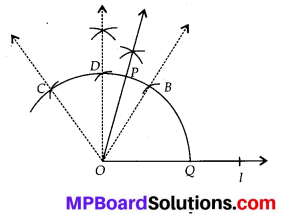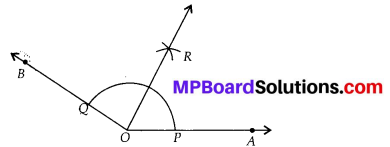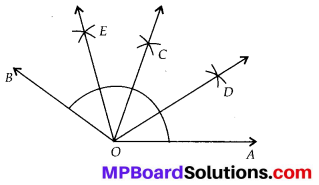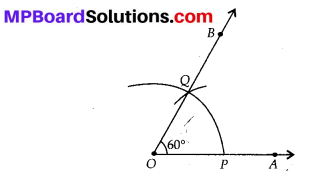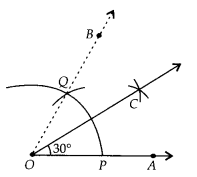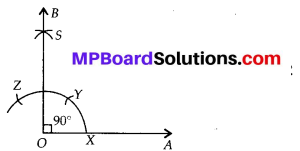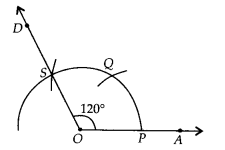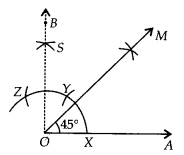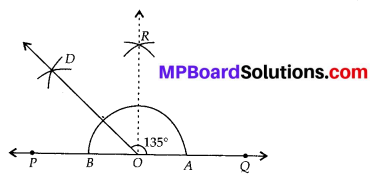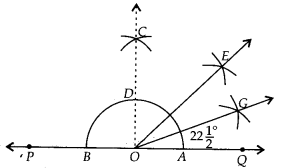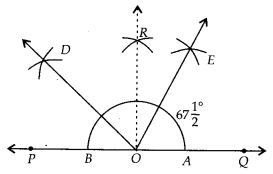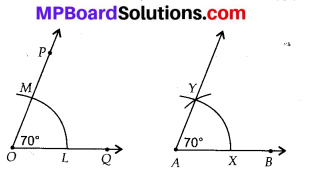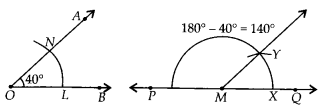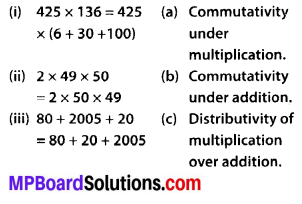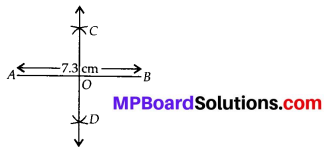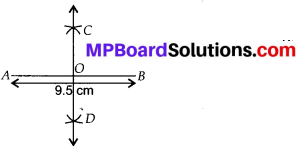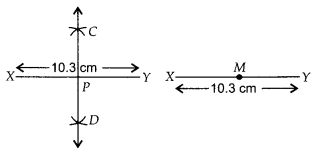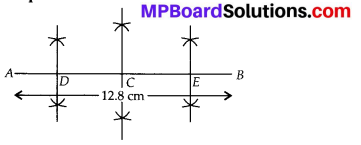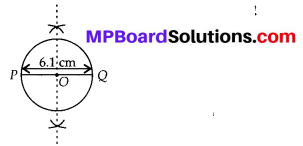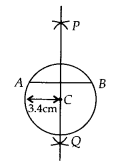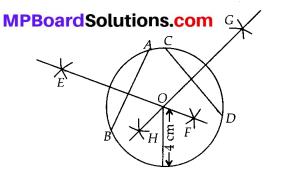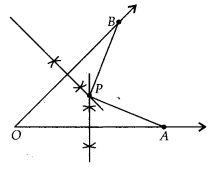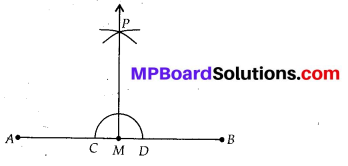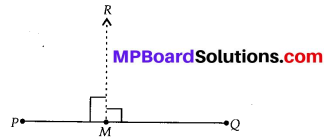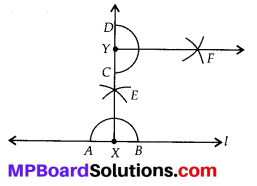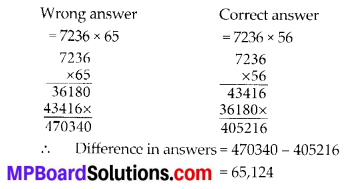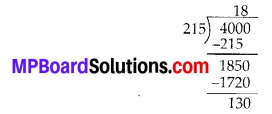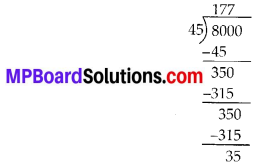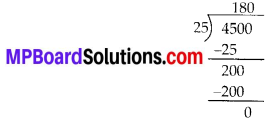MP Board Class 7th Special Hindi निबन्ध लेखन
1. कोई रोचक खेल (फुटबॉल)
प्रस्तावना-शिक्षा के साथ खेल की जरूरत –
शिक्षा से छात्र-छात्राओं का विकास होता है। उधर खेलों से उनके शरीर का विकास होता है। यदि बालक-बालिकाएँ शरीर से स्वस्थ होंगे तो उनका मन भी पढ़ाई में लगेगा। जो बालक शरीर से पुष्ट या स्वस्थ नहीं होते, उनका मानसिक विकास भी नहीं होता। यही कारण है कि बालकों को पढ़ाई के साथ ही खेल की सुविधा भी दी जाती है। विद्यालयों में कई तरह के खेल कराये जाते हैं। परन्तु इनमें से मुझे सबसे अधिक प्रिय लगने वाला खेल .’फुटबॉल’ है।
फुटबॉल खेल के नियम –
यह खेल विदेशी है। इसे पैरों से खेला जाता है। इसमें दो दल होते हैं। प्रत्येक दल में खेलने वालों की संख्या ग्यारह-ग्यारह होती है। फुटबॉल के खेल के मैदान की लम्बाई 115 मीटर और चौड़ाई 75 मीटर होती है। चौड़ाई वाली दिशाओं में आमने-सामने गोल क्षेत्र में खम्भे गाड़ देते हैं। इन खम्भों की लम्बाई दो मीटर होती है। इन खम्भों को आठ मीटर के अन्तर पर गाड़ा जाता है।
दोनों दलों का एक-एक खिलाड़ी विपक्षी खिलाड़ी को गोल में गेंद फेंकने से रोकता है। इसे गोलकीपर कहते हैं। दोनों पक्ष के खिलाड़ी विपक्षी गोल मुख में गेंद लेकर आगे बढ़कर हमला करते हैं। जो दल गोल के खम्बे के बीच से गोल को पार करने में सफल होता है, उसे विजयी घोषित कर दिया जाता है। यह खेल शरद ऋतु में प्रायःखेला जाता है। ठण्डे मुल्कों में यह खेल अधिक पसन्द किया जाता है। हमारे देश में भी यह खेल लोकप्रिय होता जा रहा है। फुटबॉल की
लोकप्रियता के कारण –
इस खेल में पक्षी और विपक्षी दलों के बाईस खिलाड़ियों को खेलने का मौका मिलता है। इस खेल के मैदान भी आसानी से मिल जाते हैं। इस खेल में भाग-दौड़ करने से व्यायाम भी हो जाता है। इस खेल के लिए किसी विशेष वेशभूषा की जरूरत नहीं होती। अमीर-गरीब, छोटे- बड़े सभी बिना भेद के इस खेल में भाग ले सकते हैं। यह साधारण वर्ग की जनता का प्रिय खेल बन गया है।
फुटबॉल खेल के लाभ –
यह खेल बहुत लाभप्रद है। इस खेल को खेलने से शरीर पुष्ट होता है। पूरे शरीर का व्यायाम हो जाता है। पसीने से शरीर के सभी विकार बाहर निकल जाते हैं।
शरीर में तेजी और स्फूर्ति आ जाती है। दिमाग भी ताजा बना रहता है। पढ़ाई करने में मन भी खूब लगता है। खिलाड़ियों में सहयोग और संवेदना जागृत हो जाती है। टीम की भावना जागृत हो जाती है। चरित्र का विकास होता है। खिलाड़ी समय के महत्व को समझने लगते हैं। अनुशासन के महत्त्व को जान लेते हैं।
उपसंहार-फुटबाल का खेल स्फूर्ति और प्रेरणा देता है। इस खेल पर विद्यालयों में उचित धन और समय-सुविधा देनी चाहिए।
![]()
2. प्रदूषण
प्रस्तावना-प्रदूषण का अर्थ-
प्रदूषण के फैलने से चारों ओर का वातावरण बहुत ही दूषित हो जाता है। इसका प्रभाव हमारे शरीर पर उल्टा पड़ता है। प्रदूषण एक अनचाहा परिवर्तन है जो वायु, जल, भोजन, भौतिक, रासायनिक और जैविक गुणों पर विरोधी प्रभाव डालता है। इसलिए जीवधारियों के समग्र विकास के लिए वातावरण शुद्ध बनाए रखना बहुत आवश्यक है। वायु, जल, भोजन आदि तथा सामाजिक परिस्थितियाँ जब असन्तुलित रूप में रहती हैं, अथवा उनकी मात्रा कम या ज्यादा हो जाती है तो वातावरण दूषित हो जाता है। इस तरह का वातावरण जीवधारियों के लिए हानिकारक हो जाता है। इसे ही प्रदूषण कहते हैं।
प्रदूषण के प्रकार
1. वायु प्रदूषण-
वायुमण्डल में गैस एक निश्चित अनुपात में मिली रहती है। जीवधारी अपनी क्रियाओं और साँस लेने से ऑक्सीजन तथा कार्बन डाइऑक्साइड का सन्तुलन बनाए रखते हैं, परन्तु आदमी ने अपनी अज्ञानता के कारण इस सन्तुलन को बिगाड़ दिया है। वह वनों को काटता है, जिससे वातावरण में ऑक्सीजन कम हो रही है। चिमनियों के धुएँ से कार्बन डाईऑक्साइड, सल्फर डाईऑक्साइड का अनुपात वातावरण में बढ़ रहा है। इन सबका प्रभाव मानव शरीर, वस्त्रों, धातुओं, इमारतों पर भी पड़ रहा है। वायु प्रदूषण से फेफड़ों का कैंसर, अस्थमा, नाड़ी मण्डल के रोग, हृदय रोग, आँखों के रोग, एक्जिमा तथा मुंहासे आदि रोग फैल जाते हैं।
2. जल प्रदूषण-
जल का प्रदूषण बढ़ रहा है। जल में खनिज तत्व, कार्बनिक और अकार्बनिक पदार्थ तथा गैसें घुली रहती हैं। इनका अनुपात सही रहता है, तो जल लाभदायक रहता है। मात्रा के अधिक होने पर जल प्रदूषित हो जाता है और हानिकारक हो जाता है। अनेक रोग हो जाते हैं। औद्योगिक संस्थानों के पदार्थों के जल में मिलने पर ऑक्सीजन कम हो जाती है जिससे मछली आदि जल के जन्तु मरने लग जाते हैं। इस प्रदूषित जल से टायफाइड, पेचिस, पीलिया, मलेरिया आदि रोग फैल जाते हैं।
3. रेडियोधर्मी प्रदूषण-
परमाणु परीक्षणों से जल और वायु तथा पृथ्वी का पर्यावरण प्रदूषित हो जाता है जिससे अनेक रोग फैल जाते हैं।
4. ध्वनि प्रदूषण-
ध्वनि प्रदूषण मनुष्य की सुनने की शक्ति को कम कर रहा है। उसकी नींद बाधित हो रही है। मोटर कार, बस, जैट विमान, ट्रैक्टर, लाउडस्पीकर, बाजे, सायरन तथा धड़धड़ाती मशीनें ध्वनि प्रदूषण कर रही हैं। इससे पदार्थों का प्राकृतिक स्वरूप ही नष्ट हो रहा है।
5. रासायनिक प्रदूषण-
किसान अपनी पैदावार बढ़ाने के लिए रासायनिक खादों का प्रयोग कर रहा है। कीटनाशक और रोगनाशक दवाइयाँ छिड़क रहा है। इससे नदियों, तालाबों, समुद्रों का जल प्रदूषित हो रहा है। इसका घातक प्रभाव सभी जीवों पर पड़ रहा है।
उपसंहार-
प्रदूषण की समस्या का समाधान-
प्रदूषण की समस्या का निदान किया जा रहा है। उद्योगों के प्रदूषण को रोकने की कोशिश हो रही है। जनसंख्या वृद्धि पर रोक लगायी जा रही है। प्रदूषण को बढ़ने से रोकने के लिए अनेक योजनाएँ बनायी गई हैं। वनों का संरक्षण किया जा रहा है। नये पेड़-पौधे लगाये जा रहे हैं।
![]()
3. दर्शनीय स्थल की मेरी रोचक यात्रा
प्रस्तावना-
दिल्ली हमारे देश की राजधानी है। यह अनेक आकर्षणों का केन्द्र है। यहाँ अनेक दर्शनीय स्थल हैं, नित नये कार्यक्रमों का आयोजन होता रहता है। छब्बीस जनवरी (गणतंत्र दिवस) पर आयोजित उत्सव को देखने के लिए मैंने निश्चय किया। मित्रों को अपना विचार बताया। हम चार मित्र दिल्ली जाने के लिए सहमत हो गये।
यात्रा की तैयारी तथा प्रस्थान-
दिल्ली जाने की तैयारी शुरू हो गई। आवश्यक सामान एकत्र किया, बाँधा और सायंकाल तक इस सबसे निवृत हो गये। हम सभी मित्र बल्लियाँ उछल रहे थे। रात्रि का समय जैसे-तैसे काटा। प्रातः हुआ। रेलवे स्टेशन पर छ: बजे से पहले पहुंचे।
टिकट घर का दृश्य-
टिकटघर खचाखच भरा हुआ था। टिकट खरीदना कठिन लग रहा था। राममोहन ने हिम्मत से भीड़ में घुसकर यह काम किया। टिकट लेकर कतार से बाहर निकला। भारतीयों में अनुशासनहीनता है। इससे लोगों को बहुत असुविधा हुई।
रेलवे प्लेटफार्म का दृश्य-
प्लेटफार्म भी स्त्री-पुरुषों से भरा हुआ था। कोई बिस्तरों पर बैठा था तो कोई इधर से उधर चक्कर काट रहा था तो कोई बैंचों पर बैठा था। चारों ओर अजीब, अस्पष्ट शोर था। गाड़ी के आगमन का लोग इन्तजार कर रहे थे।
रेलगाड़ी का आना और डिब्बे में हमारा प्रवेश-
गाड़ी र के आगमन को घण्टी बजी, सभी लोग सावधान हो गये। रुकती-रुकती गाड़ी स्टेशन पर आई। गाड़ी रुकी। लोगों की भागदौड़ शुरू हो गयी। सामान बेचने वाले भी अधिक सामान बेचने की इच्छा से इधर-उधर चहलकदमी कर रहे थे। वे सामान
बेचने के लिए जोर- जोर से चिल्ला रहे थे। बड़ी कठिनाई से हम – चारों मित्रों को जगह मिली, सामान रखा और अपनी सीटों पर – जम गये। जाड़े के दिन में भी पसीना छूट रहा था। हमारे घर के सदस्य हमें डिब्बे में बिठाकर घर लौटे। गाड़ी चली। हम खुश
मार्ग का दृश्य-
भोपाल से चलकर दिल्ली तक का मार्ग प्रसन्नता से पूरा किया। रास्ते के खेत, खड़ी फसल से लहलहा रहे थे। पेड़-पौधों भी दूरी पर हमारे समानान्तर दौड़-सी लगा रहे थे। वातावरण हृदयग्राही था। मार्ग में अनेक स्टेशन मिले, हम प्रत्येक स्टेशन पर उतरे। दिल्ली स्टेशन तक का मार्ग खुशी-खुशी तय किया।
दिल्ली दर्शन-
दिल्ली में 26 जनवरी का आयोजन दूसरे दिन देखा। पूरा दिल्ली शहर जगमगा रहा था। चप्पे-चप्पे पर पुलिस तैनात थी। कहीं पर कोई कमी नहीं आ रही थी। अलग-अलग देशों की झाँकियाँ, राष्ट्रपति, प्रधानमंत्री की सवारी देखने योग्य थी। पुलिस और फौज के कार्यक्रम अच्छे थे।
स्कूलों और कॉलेजों के छात्र-छात्राएँ इस आयोजन में बढ़-चढ़ क कर भाग ले रहे थे। भारतीय प्रगति का प्रतीक 26 जनवरी अमर रहे। दूसरे दिन वहाँ के दर्शनीय स्थल देखे। लौटकर अपने त्र रिश्तेदारों के घर जाना भी हम नहीं भूले।
उपसंहार-
यात्रा से परस्पर परिचय तथा व्यावहारिक ज्ञान तो बढ़ता है। नई-नई वस्तुएँ देखते हैं। आपसी अनुभव बाँटते हैं। देश और राष्ट्र की एकता बनती है।
![]()
4. विज्ञान और जीवन
प्रस्तावना-
आज का युग विज्ञान का युग है। संसार के कोने-कोने में विज्ञान का बोलबाला है। संसार के सभी देश
खोज की होड़ में लगे हैं। वैज्ञानिक सफलताओं में एक-दूसरे को से पछाड़ने लगे हैं। विज्ञान ने संसार को बदल दिया है।
यात्रा-
काफी पहले तक थोड़ी दूरी की यात्रा पूरी करने 1 में बड़ा वक्त लगता था। वही दूरी बसों, रेलगाड़ियों तथा हवाई जहाज से थोड़ी देर में ही पूरी की जा रही है।
मनोरंजन-
विज्ञान ने मनोरंजन के साधनों से लोगों के जीवन में चमत्कार पैदा कर दिया है। सिनेमा के पर्दे पर नाचते, गाते और बात करते चित्रों को देखकर दाँतों तले अंगुली दबानी पड़ती है। ग्रामोफोन से हृदय को आनन्द मिलता है। रेडियो और. टी. वी. पर गीत सुनाते चित्रों को देख मन मयूर नाचता है।
इलाज-
बीमारियों का इलाज मशीनों से जाँच करके हो रहा है। एक्स-रे मशीन से शरीर के भीतरी अंगों की जाँच करके रोग की पहचान की जा सकती है। सही दवाओं का उपयोग कर प्रायः सभी बीमारियों का इलाज सम्भव हो गया है।
सुख-सुविधाएँ-
बिजली के पंखे, रूमकूलर व हीटरों ने मनुष्य के जीवन को सर्दी-गर्मी के प्रभाव से रहित बना दिया है। लिफ्ट ने ऊँचे भवनों तक पहुँचने में सीढ़ी से उत्पन्न थकान को दूर कर दिया है। कल-कारखाने-अनेक कल-कारखानों में अनेक तरह की मशीनों का उत्पादन हो रहा है। युद्ध विमानों का निर्माण नरसंहार करने में भी पीछे नहीं है। अणु बम का प्रयोग सम्पूर्ण विश्व को निगलने को तैयार है।
अन्तरिक्ष-
आज के वैज्ञानिक अनुसंधानों से निर्मित रॉकेटों से चन्द्रलोक पर विजय प्राप्त की जा चुकी है। इसके अतिरिक्त मनुष्य दूसरे ग्रहों की ओर दौड़ लगाने को तत्पर है।
लोक कल्याण-विज्ञान ने कितने ही साधन मनुष्यों को दे दिये हैं जिससे उसका जीवन देवतुल्य हो चुका है। अनेक सुखों को भोग रहा है। विज्ञान का भविष्य तथा मनुष्य के जीवन की सफलता अब एक-दूसरे का पर्याय बन चुके हैं।
उपसंहार-
वैज्ञानिकों से इस संसार से सभी लोग आशा करते हैं कि मनुष्य जीवन के हित के लिए, परस्पर मैत्री और कल्याण के लिए वे कार्य करते रहेंगे, जिससे मनुष्य जीवन अपनी पूर्णताओं को प्राप्त हो जाये।
![]()
5 राष्ट्रीय उद्यान व अभयारण्य
प्रस्तावना-
राष्ट्रीय उद्यान वनों और वन्य प्राणियों की रक्षा के लिए बनाये गये ऐसे सुरक्षित क्षेत्र हैं, जहाँ जंगल के जीव अपने प्राकृतिक वातावरण में मुक्त रूप से रह सकते हैं।राष्ट्रीय उद्यानों के बनाने का उद्देश्य-इन राष्ट्रीय उद्यानों के बनाने का उद्देश्य यह है कि इनके द्वारा वन-सम्पदा, वनस्पति तथा जंगल के जीवों की रक्षा हो सके। इन वन्य जीवों और पर्यावरण को सुरक्षित रखने तथा उनकी संख्या को बढ़ाने के लिए इन राष्ट्रीय उद्यानों और अभयारण्यों को बनाया जाता है। इन राष्ट्रीय उद्यानों में खेती करना, पालतू जानवर चराना, बस्ती बनाना, शिकार करना, वृक्ष काटना जैसे कामों पर रोक लगा दी गई है।
राष्ट्रीय उद्यान और अभयारण्यों में अन्तर-
अभयारण्यों ‘और राष्ट्रीय उद्यानों की स्थापना करने का एक ही उद्देश्य है।अभयारण्यों में मनुष्य सीमित क्षेत्र में रह सकते हैं। उन पर कुछ प्रतिबन्ध (रोक) लगा रहता है। वे कुछ सीमित क्षेत्र में खेती कर सकते हैं तथा अपने पशुओं को चरा सकते हैं।
राष्ट्रीय उद्यानों और अभयारण्यों के लाभ –
प्राकृतिक सन्तुलन बनाये रखने के लिए वनों का तथा प्राणियों का रहना बहुत जरूरी है। मनुष्य ने अपने स्वार्थ और मनोरंजन के लिए वन के प्राणियों को मार डाला है। उनका शिकार करके उनके वंश को ही मिटाने पर तुला हुआ है। इन पशुओं की नस्लें ही लुप्त हो रही हैं।इन उद्यानों और अभयारण्यों से इन विलुप्त नस्लों का संरक्षण हो रहा है। उनकी संख्या बढ़ रही है। प्राकृतिक पर्यावरण की भी सुरक्षा हुई है। इन उद्यानों और अभयारण्यों के विकास से पर्यटन उद्योग भी विकसित हुआ है।
उपसंहार-
राष्ट्रीय उद्यानों और अभयारण्यों से पर्यावरण सुरक्षित हुआ है एवं प्राकृतिक सौन्दर्य से देश की आकर्षक छटा देखने योग्य हो गई है।
![]()
6. मध्य प्रदेश के राष्ट्रीय उद्यान
प्रस्तावना-
प्राकृतिक सौन्दर्य को बढ़ाने में इन राष्ट्रीय उद्यानों के निर्माण ने बड़ा सहयोग दिया है। इन राष्ट्रीय उद्यानों को बनाने के लिए राष्ट्रीय सरकार तथा प्रादेशिक सरकार दोनों ही मिल-जुलकर कार्य कर रही हैं। मध्य प्रदेश के राष्ट्रीय उद्यानों के विषय में जानकारी देते हैं
1.कान्हा राष्ट्रीय उद्यान-
यह प्रदेश का सबसे पुराना और प्रसिद्ध राष्ट्रीय उद्यान है। इसका विस्तार मंडला और बालाघाट जिले में है। यहाँ की भूमि वृक्षों और घास से ढकी हुई है। इस उद्यान को पर्यटकों के लिए वर्षा ऋतु में जुलाई से अक्टूबर महीने तक बन्द कर दिया जाता है। यहाँ ठहरने की अच्छी व्यवस्था है। यह बाघ आरक्षित क्षेत्र है।
- पशु-इस राष्ट्रीय उद्यान में बारहसिंगा, चीतल, सांभर, काला मृग, काकड़, जंगली भैंस, गौर, चौसिंगा, बाघ, तेन्दुआ, जंगली सूअर, कुत्ते, नीलगाय मिलते हैं।
- पक्षी-सोखपर, फाख्ता, मोर, कबूतर, तीतर-बटेर, चील, गरुड़, बगुला और सारस पक्षी मुख्य रूप से देखे जाते हैं।
2.बान्धवगढ़ राष्ट्रीय उद्यान-
बान्धवगढ़ राष्ट्रीय उद्यान भी बाघ आरक्षित क्षेत्र है। यहाँ प्रति वर्ग किमी बाघों का घनत्व अन्य राष्ट्रीय उद्यानों की तुलना में सबसे अधिक है। विश्व प्रसिद्ध सफेद बाघ सबसे पहले यहीं पाया गया था। यहाँ पतझड़ी वन, घास के मैदान और वाँसों के घने झुरमुट हैं। यह उमरिया जिले में स्थित है। यहाँ के लिए उमरिया से, रीवा से, शहडोल से, जबलपुर और कटनी से भी बसें जाती हैं। पशु-बाद्य के अलावा तेन्दुआ, भालू, गौर, सांभर, चौसिंगा, चिंकारा, नीलगाय, जंगली, सूअर, काकड़ भी पाये जाते हैं।
3. माधव राष्ट्रीय उद्यान (शिवपुरी)-
इस उद्यान की दूरी शिवपुरी से कुल छ: किमी है। पशु-यहाँ बाघ, तेंदुआ, भालू, सांभर, चीतल, चौसिंगा, कृष्णमृग, नीलगाय, चिंकारा, जंगली सूअर, लंगूर, मगरमच्छ तथा अजगर विशेष रूप से पाये जाते हैं।
4. सतपुड़ा राष्ट्रीय उद्यान-
यह प्रदेश का प्रसिद्ध उद्यान है। यहाँ से 32 किमी दूर पचमढ़ी मध्य प्रदेश का एकमात्र हिल स्टेशन है। पचमढ़ी को ‘पहाड़ों की रानी’ कहते हैं। ऊपर बताये गये उद्यानों की ही भांति यहाँ पशु मिलते हैं। पक्षियों में धनेश, मोर, तीतर, बटेर, कबूतर और जंगली मुर्गियाँ विशेष रूप से पाई जाती हैं।
5.संजय राष्ट्रीय उद्यान-
यह उद्यान म. प्र. के सीधी जिले से लेकर छत्तीसगढ़ राज्य के सरगुजा जिले तक फैला हुआ है। यहाँ सभी प्रकार के पशु-पक्षी पाये जाते हैं। यह वन पतझड़ी और नम हैं। यहाँ विश्रामगृह बने हुए हैं।
6. इन्दिरा प्रियदर्शिनी पेंच राष्ट्रीय उद्यान-
यह टाइगर रिज़र्व क्षेत्र है। यह महाराष्ट्र राज्य के टाइगर रिजर्व क्षेत्र से लगा हुआ है। इस प्रकार यह अन्तर्राष्ट्रीय टाइगर रिजर्व क्षेत्र है। यह सिवनी जिले में स्थित है। यहाँ से सिवनी 50 किमी दूर है।
- पशु-बाघ, तेन्दुआ, जंगली सूअर, भेड़िया, सोनकुत्ता, भालू, गौर तथा हिरणों की अनेक प्रजातियाँ यहाँ मिलती हैं।
- पक्षी-वनमर्गी, सारस, धनेश, चील, किलकिला, मैना, तीतर, बटेर पक्षी भी बड़ी संख्या में पाए जाते हैं। जाड़े में यहाँ प्रवासी पक्षी भी आ जाते हैं।
7. पन्ना राष्ट्रीय उद्यान टाइगर रिजर्व क्षेत्र-
यह पन्ना और छतरपुर जिलों में फैला हुआ है। विश्व प्रसिद्ध पर्यटन स्थल खजुराहो यहाँ से 20 किमी दूर है। यहाँ से होकर केन नदी बहती है। इसमें मगर और घड़ियाल पाए जाते हैं। यहीं हीरों की खान
पशु-बाघ, तेन्दुआ, भेड़िया, सांभर, भालू, नीलगाय और हिरण यहाँ पाये जाते हैं। केन नदी का स्वच्छतम पानी है।
8. वन विहार राष्ट्रीय उद्यान-
यह क्षेत्रफल में सबसे छोटा उद्यान है। भोपाल के समीप ही है।
पशु-यहाँ बाघ, भालू, बिज्जू, लकड़बग्घा, सांभर कृष्णमृग, मगर, कछुए आसानी से देखे जा सकते हैं। यहाँ सफेद बाघ भी हैं।
9. जीवाश्म राष्ट्रीय उद्यान-
यह अन्य उद्यानों से अलग ही तरह का है। इसमें वनस्पतिक जीवाश्मों को संरक्षित किया गया है। .
उपसंहार-इन राष्ट्रीय उद्यानों में स्वतंत्र रूप से कोई भी नहीं घूम सकता। इस काम के लिए जीप-कार, प्रशिक्षित हाथी मिलते हैं। पैदन घूमना खतरे से भरा है। निश्चित मार्गों से ही घूमना चाहिए।
![]()
7. वृक्षारोपण (वन महोत्सव)
प्रस्तावना-
वृक्षारोपण (वन महोत्सव) का तात्पर्य वृक्ष लगाने से है। भारत कृषि प्रधान देश है। वर्षा पर ही यहाँ खेती निर्भर है। यहाँ सिंचाई के कृत्रिम साधन अच्छे नहीं है। वर्षा वनों पर ही निर्भर है। यहाँ पर वर्षा मानसूनी हवाओं से होती है।प्रायः मानूसनी हवाएँ जुलाई से वर्षा करती हैं। अत: वृक्षारोपण कार्य जुलाई से करना चाहिये। वृक्ष लगाना बहुत महत्वपूर्ण कार्य है।
महत्व-
हमारे देश में अनादिकाल से ही वृक्षों की पूजा की जाती है। ये वृक्ष आश्रयदाता के रूप में जाने जाते हैं। हिंसक पशुओं से व्यक्ति वृक्षों के सहारे अपनी सुरक्षा कर लेते हैं। प्रत्येक वृक्ष में देवता का निवास होता है। प्राचीन काल से ही पीपल, बरगद, नीम, आँवले, केला और तुलसी की पूजा की जाती रही है। वृक्ष का सम्बन्ध मानव सभ्यता और मानवता से सदैव जुड़ा रहा है। वृक्ष हमारे सहायक, मित्र तथा शिक्षक रहे हैं।
वन और वृक्षों की वर्तमान स्थिति-
वन महोत्सव का प्रारम्भ सन् 1950 से हुआ है। उस समय कन्हैयालाल माणिकलाल मुंशी जो केन्द्र सरकार में खाद्य मंत्री थे, ने सबसे पहले तीस करोड़ वृक्ष लगाने की योजना बनाई। यह भी घोषणा कर दी कि जब तक पेड़ सूख न जाएँ, तब तक उसे काटा नहीं जाना चाहिए। बिना अनुमति के जो वृक्ष काटेगा, वह दण्ड का भागी होगा। पुराने वृक्षों की रक्षा भी करनी पड़ेगी। प्रत्येक व्यक्ति का यह कर्त्तव्य है कि वह वृक्षों को नहीं काटे। अपने कर्तव्य का पालन वृक्ष की रक्षा करके ही हो सकेगा।
लाभ-
वन महोत्सव से धार्मिक और भौतिक दो तरह के लाभ मिल सकते हैं। पुराणों में वर्णन आता है कि जो व्यक्ति पाँच वृक्ष लगाता है, उसे स्वर्ग की प्राप्ति होती है। भौतिक लाभों में वृक्ष वायु को शुद्ध करते हैं। वे कार्बन डाइऑक्साइड लेते हैं और ऑक्सीजन निकालते हैं। मानव स्वास्थ्य के लिए वृक्ष वरदान हैं। अनेक रोगों की औषधियाँ मिलती हैं। वर्षा कराने में वृक्ष लाभकारी हैं।
उपसंहार-
वृक्षारोपण में सबको सहयोग से यह पर्व के रूप में मनाना चाहिए। सरकार भी इस ओर कर्तव्यपालन कर रही है।
![]()
8. कम्प्यूटर
प्रस्तावना-
देश का कम्प्यूटरीकरण किया जा रहा है। यहाँ उद्योग-धन्धे, बैंक आदि सभी संस्थानों में कम्प्यूटर लगाने का दौर चल पड़ा है।
कम्प्यूटर क्या है?-
कम्प्यूटर में यांत्रिक मस्तिष्क लगा हुआ है जो कम-से-कम समय में बिना किसी गलती के ज्यादा से ज्यादा गणना कर सकता है। कम्प्यूटर सर्वाधिक तीव्र, शुद्ध और उपयोगी गणना करने में सक्षम है। चार्ल्स बेबेज (Charles Babbage) ने 19वी शताब्दी के आरम्भ में पहला कम्प्यूटर बनाया।
कम्प्यूटर के उपयोग-
आज कम्प्यूटर का व्यापक रूप से प्रयोग हो रहा है। प्रत्येक क्षेत्र में कम्प्यूटर फिट है।
बैंकिंग के क्षेत्र में-बैंकों में कम्प्यूटर पर लेन-देन का व्यवहार बड़ी आसानी से किया जा रहा है।
प्रकाशन का काम-
समाचार और पुस्तकों के क्षेत्र में कम्प्यूटर से छपाई और प्रकाशन का काम किया जा रहा है।। सूचना और समाचार भेजने के क्षेत्र में-दूरसंचार की दृष्टि से कम्प्यूटर अति महत्त्वपूर्ण है।
डिजाइनिंग के क्षेत्र-
कम्प्यूटरों से कारों, जहाजों, भवनों, बसों आदि के डिजाइन तैयार किये जा रहे हैं। कला के क्षेत्र में, वैज्ञानिक खोजों के क्षेत्र में, औद्योगिक क्षेत्र में, युद्ध क्षेत्र में कम्प्यूटर मानव मस्तिष्क की त कार्य कर रहे हैं।
उपसंहार-
कम्प्यूटर ने मनुष्य के जीवन व संसा को ही बदल दिया है।
![]()
9. पर्यावरण, वन्य पशु तथा मनुष्य की पारस्परिक निर्भरता ।
प्रस्तावना-
पर्यावरण, वन्य पशु तथा मनुष्य की पारस्परिक निर्भरता सर्वविदित है। युगों-युगों से मनुष्य अपने पर्यावरण एवं वन्य पशुओं से सामंजस्य स्थापित कर सफलतापूर्वक स्वस्थ एवं दीर्घ जीवन व्यतीत करता आया है, किन्तु वर्तमान मशीनी युग में विकास के नाम पर मनुष्य ने जाने-अनजाने प्रकृति से छेड़छाड़ कर अपने और अपनी संतति के भविष्य पर एक बड़ा प्रश्नचिह्न लगा दिया है।
जैव मण्डल क्या है ?-
हमारे ग्रह पर जीवन है। इस पर जीवन किससे सधा हुआ है ? वायु की और जल की एक पतली पर्त है जिसे पृथ्वी के चारों ओर जैवमण्डल के रूप में जाना जाता है। इस जैवमण्डल के बिना हमारी पृथ्वी जीवन से रहित हो जायेगी, उस जीवन से रहित हो जायेगी जो अन्तरिक्ष में घुला-मिला है।
एक पूर्ण वृत्त (घेरा)-
जैवमण्डल ऑक्सीजन, नाइट्रोजन, कार्बन डाइऑक्साइड, आर्गन तथा जल वाष्प का मिश्रण है। इस सन्तुलन को ग्रहों के वृत्त के द्वारा, प्राणियों के द्वारा तथा बैक्टीरिया के द्वारा बनाया हुआ है। पौधों के प्रकाश संश्लेषण (फोटो-सिन्थेसिस) की क्रिया के बिना मानव अथवा अन्य प्राणियों के जीवन रहने के लिए ऑक्सीजन नहीं रहेगी।
वानस्पतिक सन्तुलन के रुकावट (अवरोध)-
जब कभी हम हवा, पानी, भोजन और औद्योगिक कच्चे माल की समाप्ति के विषय में सोचते हैं जिससे यह पृथ्वी बनी है, वस्तुतः जिसे हमने उन्नति के रूप में देखा है, वही वानस्पतिक सन्तुलन के लिए रुकावट है। वही अन्तत: इस ग्रहण पर जीवन को पुष्ट करने का जो तरीका है, उसी में गड़बड़ी हो जायेगी।
प्रदूषण के रूप-
प्रदूषण से मानव जीवन तथा प्राकृतिक जीवन बहुत अधिक प्रभावित होता है। यह प्रदूषण-वायु, पानी, मिट्टी, ध्वनि के रूप में हो रहा है। वायु प्रदूषण से फेफड़ों की बीमारी होती है। जल प्रदूषण से हैजा फैलता है। मिट्टी के प्रदूषण से हमारी सब्जियाँ जहरीली हो जाती हैं। ध्वनि प्रदूषण इंजनों और तेज ध्वनियों को करने से होता है और वह हमारे भौतिक तथा मानसिक स्वास्थ्य के लिए हानि पहुंचाता है।
उपसंहार-
पर्यावरणीय प्रदूषण एक विश्व समस्या है। विकासशील देश ही इसके लिए दोषी नहीं है। हमें इस तरह की योजनाएँ बनानी चाहिए जिससे मानवीय पर्यावरण नष्ट न हो। विश्व के राष्ट्रों को उपाय ढूँढने चाहिए और इस समस्या के समाधान के साधन हूँढ़ने चाहिए।
![]()
10. दीपावली
प्रस्तावना-
हमारे देश भारतवर्ष में अनेक त्यौहार मनाये जाते हैं जिनमें कुछ राष्ट्रीय हैं, तो कुछ धार्मिक तथा सामाजिक। सामाजिक त्यौहारों में हिन्दुओं के मुख्य चार त्यौहार होते हैं। होली, दशहरा, रक्षाबन्धन तथा दीपावली। इनमें से दीपावली के त्यौहार को बड़ी धूमधाम, श्रद्धा और प्रेम से मनाते हैं। यह त्यौहार कार्तिक मास की अमावस्या को मनाया जाता है।
मनाने का कारण-
कहते हैं कि श्री रामचन्द्रजी लंका के राजा रावण को मारकर तथा लंका पर विजय प्राप्त करके सीता के साथ अयोध्या इसी अमावस्या के दिन लौटे थे। उनके लौटने की खुशी में सभी अयोध्यावासियों ने घर-घर में खुशियाँ मनाई और अपने घरों, मन्दिरों में दीपक जलाए। पंक्ति में जलाये गये दीपक उनकी खुशी को प्रकट कर रहे थे। उसी की यादगार में यह त्यौहार आज भी मनाया जाता है।
दीपावली का महत्त्व-
महावीर स्वामी का निर्वाण दिवस दीपावली का दिन था। सभी जैन समुदाय इस दिन खुशियाँ मनाता है। स्वामी दयानन्द के निर्वाण का दिवस भी दीपावली होने के कारण सभी हिन्दू हर्ष और उल्लास के साथ इस त्यौहार को मनाते हैं।
तैयारी-
इस त्यौहार को मनाने की तैयारी क्वार (अश्विन) महीने से ही शुरू हो जाती है। वर्षा समाप्त हो जाती है। रास्तों की कीचड़ सूख जाती है। नदियों, तालाबों का पानी स्वच्छ हो जाता है। घरों की मरम्मत होने लगती है, पुताई की जाती है। इस तरह दीपावली के आने की खुशी में वातावरण उल्लासमय दिखाई पड़ता है। दुकानें और बाजार सज जाते हैं।
त्यौहारों का वर्णन-
अमावस्या के पूर्व धनतेरस का त्यौहार होता है। बाजार और दुकानें सजा दी जाती हैं। बर्तनों की दुकानें विशेष रूप से सजाई जाती हैं। इस दिन प्रत्येक घर में कोई-न-कोई नया बर्तन खरीदा जाता है। अगले दिन छोटी दीपावली होती है। इसे नरक चौदस भी कहते हैं। इस दिन आटे का दीपक घरों पर जलाते हैं। अमावस्या के दिन बड़ी दीवाली होती है। बच्चे, जवान, बूढ़े सभी प्रसन्न दिखते हैं। हलवाई लोग मिठाइयों की दुकान सजाते हैं। घर-घर पकवान बनते हैं। नये वस्त्र पहनकर रात्रि को लक्ष्मीपूजन होता है। दीपक जलाये जाते हैं। आतिशबाजी होती है।
इसके अगले दिन गोवर्धन की पूजा होती है। उसके अगले – दिन भाई दौज का त्यौहार मनाया जाता है। बहन-भाई को तिलक करती है और भाई के दीर्घायु होने की कामना करती है।
उपसंहार-
लोग जुआ खेल कर, शराब पीकर इस त्यौहार की शुद्धता को समाप्त कर देते हैं। इस पवित्र त्यौहार को दूषित होने से बचाना हमारा धर्म है।
